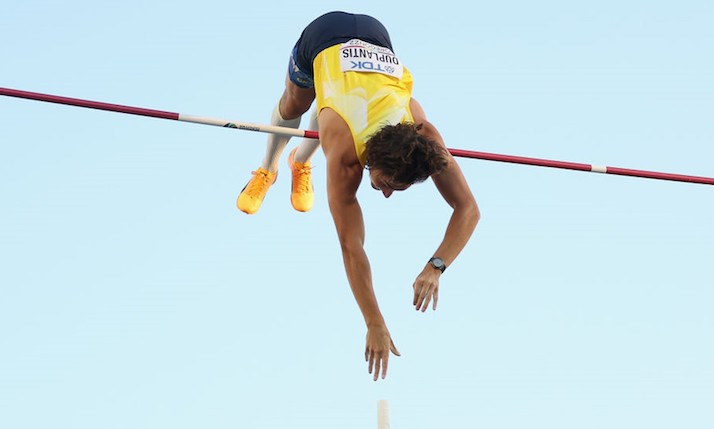Future gazing: Qvest on the changes, evolutions, and technologies shaping sports broadcasting in 2024
 By Konstantin Knauf, Qvest Europe managing director.
By Konstantin Knauf, Qvest Europe managing director.
If you like sport and broadcasting, 2024 will be a very special year: European championships in football and handball, Summer Olympics, Paralympics, and more events, “step onto the pitch” with linear TV, over the top (OTT), social media feeds, and other output channels.
In the multi-faceted landscape of sports broadcasting, the year 2024 emerges as a juncture where technological trends are reshaping how audiences consume and engage with sports content. Ironically, the media providers themselves are therefore in a kind of sporting (and frankly above all, economic) challenge for the favour of the target groups and the – to some certain extent – always limited household spending budgets. In this context, I see major challenges and chances for broadcasters.
Shift in consumption
One of the key subjects here is the shift in consumption behaviour. In a recent interview, a German sports executive was debating the challenge of the so-called Gen Z audience who are no longer attentively watching the full 90 minutes of a football match, but tend instead to consume snippets and highlights. Shortly after the interview I pitched this statement to a TV tech executive regarding future sports and while cloud, artificial intelligence (AI) services and operations improvements have been high on the agenda, the risk of not being ready for shifting consumer pattern was seen, but not part of the technology planning cycle yet.
While technology investment cycles have become shorter with more software-based solutions and cloud platforms, the reality is that major projects from concept, budgeting, inception, design, tendering, implementation and releasing a market-ready product have not. At the one hand it should have become easier, at the other hand the challenges on consumer side have increased.
We believe that strategic foresight, so considering likely futures as part of the technology investment process, is crucial. If we bring this theoretical approach to the sports field, that means the consumption pattern should set the baseline for strategic planning and implementation of sports broadcasting activities, with a clear view on ecosystems, products, and operations.
Strategic foresight
To stay in the picture, from my perspective strategic foresight is the best possible training programme before you start the championship, and to tackle those all time-consuming opponents, form a perfect team and go for the touchdown. The better you are prepared – with time to align customer approach, offering, operations and technology – the more effective and successful your broadcasting measures can be, especially in the sports and live sector.
Anticipating likely futures is in this area is not merely an option but a cornerstone of the technology investment process in sports broadcasting. There is a major need to align technology investments with evolving consumption patterns, positioning strategic foresight as the linchpin for successful planning and implementation.
In this era of change, the consumption pattern becomes crucial for strategic planning and implementation. I encourage a comprehensive view encompassing ecosystems, products, and operations. Ecosystem considerations are illustrated through strong examples such as Formula 1, where brands transcend their traditional boundaries, embracing digital and physical touchpoints.
Formula 1’s success story stands as a testament to a strategic digital transformation. Just to give one example, beyond the racetrack, the brand extended its reach by setting up a new racetrack and a permanent brand space in Las Vegas, US, as we all saw in November 2023. Simultaneously, this worldwide racing circus has raised awareness through the Drive to Survive series on Netflix.
This multifaceted approach not only increases brand value and awareness but also exemplifies the potential for strategic integration in the digital age. This holistic perspective extends to digital products, recognising that younger generations interact with sports content, data, social feeds, and gaming in distinct and clearly different ways. The match plan can only be to stay ahead, sports broadcasting must evolve its products to match these changing consumption patterns.
As the landscape evolves, high degrees of automation and personalisation become critical in future operational models. Acknowledging the challenges posed by diverse consumption patterns, a future-ready operational model must seamlessly integrate high levels of automation and personalization, utilising integrated systems, a data centric approach and automation and artificial intelligence at its core. In my perspective, this is pivotal in addressing the nuanced demands of contemporary audiences and ensuring a dynamic and responsive sports broadcasting ecosystem, while staying true to your sports and brand!
Next generation
The focus then shifts to the evolving landscape of digital products. Generally speaking, digitalisation allows new modes of interaction and experience for the audiences, which is especially attractive for sports broadcasting. More precisely, the fusion of sports content, data, and social engagement, coupled with gaming experiences, is the key to capturing the attention and loyalty of the next generation of sports enthusiasts, not considering media touchpoints side by side but driven from an integrated, brand and sports centred experience.
As we stand at the precipice of a new era in sports broadcasting, success lies in the ability to not only meet the challenges head-on but to harness them as opportunities for innovation and growth. The fusion of strategic foresight and technological agility will be the guiding compass for those charting the course in this ever-evolving landscape.

